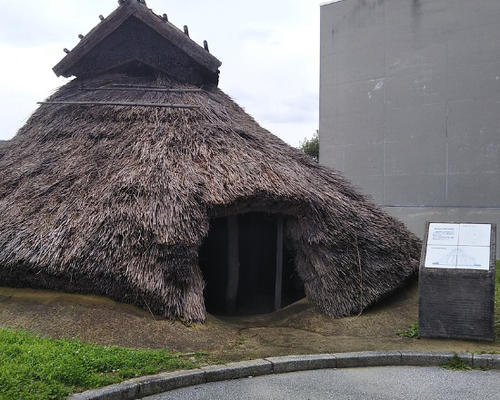Ritual practices and social organisation of the Middle Yayoi culture in eastern Japan
Tateanajukyo (Yayoi Period)
Image Credit: Senbei6304 CC0 1.0
Cultural history studies today benefit greatly from the progressive development and application of scientific methods. This includes studies of the gradual transformation of early hunters, fishermen and gatherers into farmers and pastoralists, which is considered one of the most significant upheavals in human history. On the one hand, this transformation brought social inequality and a less nutritious, more one-sided diet. On the other hand, this development also paved the way for the emergence of modern societies.
In Japan, this fundamental change in diet occurred during the Yayoi period (10th/4th century BC - 250 AD), when the first farmers migrated from the East Asian continent. In principle, there is agreement that the transition from a savage to a peasant way of life favoured considerable population growth and the emergence of local chiefdoms and social hierarchies. However, it remains controversial when social stratification emerged in the period between the first agricultural activities and the early formation of states from AD 250 onwards.
The data
The archaeobotanical remains recovered come from the preserved deposits of hearths or fireplaces found in the excavated remains of houses of the Middle Yayoi period of the Maenakanashi archaeological site (Kumagaya City, Saitama Prefecture, eastern Japan). The record contains seeds of wild and cultivated plants. The latter include rice, foxtail millet and panicle millet.
In addition, the botanical samples also contain rice chaff (husks of rice grains). The carbonised botanical material was extracted from the remains of a total of ten hearth sites from eight pit houses in excavation sections 2 and 3 using the sponge method and analysed using a stereomicroscope.
The data are broken down by sample (hearth site) and identified plants. In addition, the sample size and the exact origin are given by section.
Publication of the dataset: Leipe C, Endo E et al (2020) https://doi.org/10.1594/PANGAEA.912698
Research results
Together with the archaeological data from the studied settlement site, such as the size, location and type of buildings and the distribution of artefacts (e.g. pottery vessel remains), the botanical data allow a new insight into the social organisation of the early farming communities of the Yayoi period in the study area.
The results show that rice and millet were the most important food sources for the inhabitants of the settlement. However, the data also indicate that rice, which is more laborious to cultivate than millet in wet fields and has a higher productivity than millet, had a higher status. Rice played an important role in ritual practices and in reinforcing social hierarchies at the settlement site studied. The grain was used for ritual banquets that took place in connection with pile dwellings, which were often large and occupied a spatially separate central place within a settlement.The study results substantiate the assumption that these pile dwellings were residences of political and/or religious leaders who conducted these rituals in connection with agricultural production and the worship of their ancestors.
Ultimately, these ritual festivals served to empower local leaders as well as mobilise labour for agricultural production. Such ritual practices were probably brought to Japan by the first farmers who migrated from mainland East Asia. This means that social stratification existed at the earliest stage of the development of the peasant way of life in Japan.
Publication of the journal article: Leipe C, Kuramochi S et al (2020) https://doi.org/10.1007/s12520-020-01098-y
Texts modified after: Leipe C, Kuramochi S et al (2020) https://doi.org/10.1007/s12520-020-01098-y
